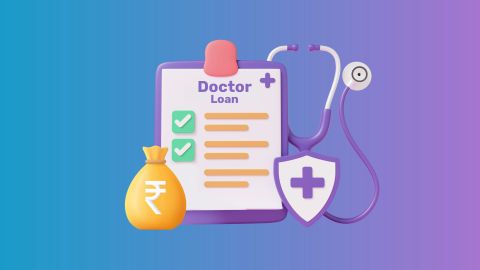Benefits of Becoming a Certified Management Accountant (CMA)
Earning your CMA certification requires dedication, with the IMA suggesting 150 to 175 study hours for both Part 1 and Part 2 of the exam. However, the effort is undoubtedly rewarding, as becoming a CMA significantly enhances your career prospects.
Here are some key benefits of becoming a Certified Management Accountant:
- Higher earning potential: According to the IMA's 2021 Global Salary Survey, CMAs earn an average of 58% more than their non-CMA counterparts.
- Career growth: The CMA certification showcases your expertise in financial management and broadens your accounting capabilities. CMAs frequently collaborate with or join the C-suite, playing a crucial role in organisational decision-making.
- Global recognition: As an internationally respected credential, the CMA opens doors to global career opportunities and helps you stand out on the international stage.
- Prestige and credibility: Achieving the CMA certification reflects your dedication to the profession, reinforcing your expertise in management accounting.
If you're a finance professional aiming for similar financial growth, you might also consider options to apply for CA loan for professional development or business expansion.
What Do Certified Management Accountants (CMAs) Do?
Certified Management Accountants (CMAs) play a vital role in an organisation's financial health and strategic planning. They perform various functions, including:
- Financial analysis: Evaluating financial data to support decision-making.
- Budgeting: Creating and managing budgets to ensure optimal resource allocation.
- Forecasting: Predicting future financial performance and economic trends.
- Internal controls: Implementing and overseeing internal financial controls to prevent fraud.
- Risk management: Identifying and mitigating financial risks.
- Performance management: Analysing and reporting on business performance metrics.
- Strategic planning: Contributing to the development of business strategies and long-term financial goals.
If you're a chartered accountant looking to build similar expertise, reviewing CA loan eligibility can help support your career objectives.
How to Become a Certified Management Accountant (CMA)?
Becoming a certified management accountant involves several steps to ensure that candidates have the necessary education, experience, and expertise. The process includes:
- Education: Obtaining a bachelor's degree or a related professional certification.
- Experience: Gaining at least two years of relevant professional experience in management accounting or financial management.
- Membership: Joining the Institute of Management Accountants (IMA).
- Program enrollment: Enrolling in the CMA certification program.
- Examination: Successfully completing both parts of the CMA exam.
- Certification maintenance: Maintaining certification through continuing education and adherence to ethical standards.
Aspiring professionals who plan their finances efficiently often research options like CA loan interest rate to fund courses or certifications.
1. Earn a bachelor’s degree or related professional certification
Earning a bachelor’s degree is the first step to becoming a certified management accountant. A degree in accounting finance, or a related field provides the foundational knowledge necessary for a career in management accounting. Alternatively, obtaining a related professional certification such as a CPA can also fulfil this requirement. The education provides essential skills in financial reporting, analysis, and strategic management. This academic background equips candidates with the analytical and technical skills needed to succeed in the CMA program and in their professional careers.
2. Gain at least two years of relevant professional experience
To qualify for the CMA designation, candidates must gain at least two years of relevant professional experience. This experience should be in management accounting or financial management, where candidates can apply their knowledge of financial analysis, budgeting, and strategic planning. The hands-on experience helps in understanding the practical aspects of financial decision-making and internal controls. Working in roles such as financial analyst, budget analyst, or accounting manager provides the necessary exposure to real-world financial scenarios, preparing candidates for the challenges of the CMA exam and their future careers.
3. Join the Institute of Management Accountants (IMA)
Joining the Institute of Management Accountants (IMA) is a crucial step in the journey to becoming a CMA. The IMA is the certifying body that offers the CMA credential and provides resources, networking opportunities, and professional development for its members. Membership in the IMA grants access to study materials, professional journals, and a global community of accounting professionals. It also provides support through webinars, conferences, and local chapter meetings, helping candidates stay updated with industry trends and best practices, thereby enhancing their professional growth and readiness for the CMA exam.
4. Enrol in the CMA program
Enrolling in the CMA program is the next step after joining the IMA. This involves registering for the CMA certification course, which includes access to study materials, exam guides, and practice tests. The program covers two parts: Financial planning, performance analytics, and strategic financial management. Each part includes various topics such as budgeting, financial reporting, internal controls, and decision analysis. Enrolling in the program ensures that candidates receive structured training and resources necessary to prepare for and succeed in the CMA exams, equipping them with the skills needed for advanced financial management roles.
5. Complete both parts of the exam.
The CMA exam consists of two parts, each testing different aspect of management accounting and financial management. Part 1 focuses on Financial Planning, Performance, and Analytics, while Part 2 covers strategic financial management. Candidates must pass both parts to earn the certification. Each exam part includes multiple-choice questions and essay questions, assessing candidates' knowledge, analytical skills, and ability to apply concepts in real-world scenarios. Thorough preparation, using study materials and practice exams provided by the IMA, is crucial for success. Passing these exams demonstrates a comprehensive understanding of advanced accounting and strategic financial management.
6. Maintain the certification.
Maintaining the CMA certification requires ongoing professional development and adherence to ethical standards. Certified management accountants must complete 30 hours of continuing professional education (CPE) annually, including two hours in ethics, to stay current with industry practices and regulations. This ensures that CMAs continue to enhance their skills and knowledge, keeping them relevant in the ever-evolving field of management accounting. Additionally, CMAs must adhere to the IMA's statement of ethical professional Practise, maintaining high ethical standards in their professional conduct. Regularly updating their knowledge and skills helps CMAs provide valuable insights and maintain their professional credibility.
CMA Exam Structure
The CMA exam consists of two parts, each with multiple-choice questions and essay questions. For each part, you need to score at least 50% in the multiple-choice section before moving on to the essay section. The exam is not an open-book test.
Part 1 of the CMA exam focuses on financial planning, performance, and analytics. Part 2 tests your understanding of strategic financial management.
The IMA administers the CMA exam in a computer-based format at its global network of Prometric Testing Centres. You can take the two exam parts in any order, and you can also choose to take them on the same day or on separate days.
Here is a breakdown of the exam structure:
CMA exam structure
|
Foramt
|
Time
|
Part 1: Financial Planning, Performance, and Analytics
|
100 multiple-choice questions, 2 essay questions covering 10-12 calculations or written answers
|
3 hours for multiple-choice questions, 1 hour for essay questions
|
Part 2: Strategic Financial Management
|
100 multiple-choice questions, 2 essay questions covering 10-12 calculations or written answers
|
3 hours for multiple-choice questions, 1 hour for essay questions
|
Where to take the CMA exam?
The CMA exam is offered at various prometric testing centres worldwide, providing flexibility for candidates to choose a convenient location. Prometric centres are equipped with secure, standardised testing environments to ensure a fair and consistent examination process. Candidates can schedule their exams online through the prometric website after registering with the IMA. The exams are available during specific testing windows throughout the year, allowing candidates to plan their study schedules accordingly. Ensuring access to a nearby testing centre and familiarise oneself with the exam format can help reduce stress and improve performance on the exam day.
CMA exam registration and fees
To register for the CMA exam, you need to become a member of the IMA (Institute of Management Accountants) and enrol in their CMA candidate program.
The IMA conducts the CMA exam during three main testing windows every year: January/February, May/June, and September/October. You must register for the next available window by the 15th of February, June, or October. Registration can be done online or over the phone. For phone registrations, you can contact the IMA at their designated numbers.
You can take the CMA exam even before fulfilling the education and work experience requirements for professional certification. However, you must complete your degree and meet the work experience criteria within seven years of passing the CMA exam for the IMA to recognise your test scores.
There are no citizenship requirements, but you will need to verify your identity with an official document (such as a passport, passport card, or government-issued driver's license) when you appear for the exam.
You can attempt the CMA exam as many times as needed.
Exam Fees:
The IMA has different fee structures for student and professional members. If you join the IMA as a student or academic member, the fees are as follows:
IMA membership: ₹3,500 (student) or ₹12,000 (academic member)
CMA entrance fee: ₹18,000
Examination fee: ₹27,000 per part
For professional IMA members, the following fee schedule applies:
IMA membership: ₹22,000
CMA entrance fee: ₹22,500
Examination fee: ₹37,000 per part
Penalty Fees:
If you do not reschedule your exam at least 72 hours in advance or cancel at least 30 days before the scheduled test date, penalty fees may apply.
CMA exam preparation tips
No matter which exam preparation method you prefer, it’s important to start early. According to the IMA, candidates typically need around 170 hours to prepare for Part 1 and 130 hours for Part 2. In total, this equates to roughly 18-24 weeks of study if you follow the IMA's advice and dedicate at least 12 hours per week to your preparation.
Top Tips:
- Make a Study Plan
Start by creating a clear and structured study plan. Schedule regular study time each week (or even daily, if possible). Stick to your schedule and dedicate as much time as you can to your studies.
- Enroll in a Prep Course
Many candidates achieve CMA certification through self-study. However, enrolling in a formal prep course provides a structured approach that can be very helpful. You can choose from in-person classes or flexible online courses, which may be live or pre-recorded.
- Use Practice Tests
Take practice exams to simulate the actual test environment. Start with untimed practice exams and gradually move to timed ones as you become more familiar with the format and questions. When you start scoring well consistently, you will be ready for the real exam.
- Ramp Up Before Exam Time
As the exam date approaches, many candidates choose to intensify their study efforts. For example, you could increase your study hours to more than the IMA's recommended 12 hours per week during the final weeks. This can help you get immersed in the material and build your confidence for the exam.
CMA accounting certification requirements
To earn the CMA (Certified Management Accountant) certification, candidates must:
- Hold a bachelor’s degree (or an approved professional certification).
- Have at least two years of full-time work experience in management accounting or financial management.
- Pass both parts of the CMA exam.
Full list of requirements
- Become an IMA member
- Enroll in the CMA Program
- Study for and pass the CMA exam
- Meet education or professional certification requirements
- Meet work experience requirements
- Comply with IMA ethics standards
- Fulfill continuing education requirements
Difference between CMA vs. CPA
Feature
|
Certified Management Accountant (CMA)
|
Certified Public Accountant (CPA)
|
Primary focus
|
Focuses on financial expertise for internal business strategy, budgeting, and performance management.
|
Ensures financial statements are accurate, compliant, and ready for public use, with emphasis on auditing, tax, and regulation.
|
Governing body
|
Conducted by the Institute of Management Accountants (IMA).
|
Conducted by the American Institute of Certified Public Accountants (AICPA), with state boards issuing licenses.
|
Typical career path
|
Commonly employed in corporations as Financial Analysts, Cost Accountants, or progressing to Controller or CFO roles.
|
Typically begins in public accounting firms (like the Big Four) as Auditors or Tax Consultants, with options to move into corporate or government roles.
|
Global recognition
|
Recognised in more than 100 countries, making it suitable for multinational organisations.
|
Highly respected worldwide, but the U.S. CPA license is primarily valid for practice within the United States.
|
Exam structure
|
Two exam parts covering financial planning, analytics, and strategic financial management.
|
Four exam sections covering Auditing, Financial Accounting & Reporting, Regulation, and one chosen discipline.
|
Time commitment
|
Usually takes 12-18 months to finish; candidates get up to three years to clear both parts.
|
All four sections must be cleared within an 18-month time frame.
|
Work-life balance
|
Generally, offers better work-life balance, as CMA roles are less affected by peak audit and tax seasons.
|
Workload can be heavy during peak periods such as tax season and audit deadlines.
|
Skills developed
|
Strengthens analytical and strategic skills in financial decision-making, budgeting, and forecasting.
|
Builds expertise in accounting standards, tax laws, financial reporting, and auditing practices.
|
Career paths for Certified Management Accountants (CMAs)
CMAs are regarded as strategic financial advisors who support top management and help enhance financial efficiency. Their career paths often progress toward senior leadership roles. Professionals can also explore related financial opportunities, such as understanding CA loan eligibility, which is useful for those planning entrepreneurial ventures or independent practice.
Typical Entry-Level/Early Career Roles (0–5 years):
- Cost Accountant
- Financial Analyst
- Management Accountant
- Internal Auditor
Mid to Senior-Level Roles (6+ years):
- Finance Manager
- Senior Accountant
- Management Consultant
- Finance Director
- Chief Financial Officer (CFO) (achievable with experience and career progression)
Key areas of practice:
- Cost control and financial planning
- Opportunities across manufacturing, FMCG, government PSUs, and highly regulated sectors
CMAs can also pursue independent practice (with a Practice Certificate), offering consultancy or audit services.
Best-paying sectors for CMA professionals in India
Although CMAs are sought after in many industries, certain sectors have traditionally offered higher compensation, including:
- Banking and Financial Services
- Manufacturing
- IT and Consulting
- FMCG and Retail
How long does it take to earn a CMA certification?
Earning a Certified Management Accountant (CMA) certification typically takes around 12 to 18 months. This includes time for studying for and passing two rigorous exams, as well as fulfilling the work experience requirement. Candidates often spend about 150 to 200 hours preparing for each exam. The total duration can vary based on individual pace, prior knowledge, and study methods. Completing the certification also depends on maintaining active membership with the Institute of Management Accountants (IMA) and adhering to continuing education requirements.
Conclusion
Becoming a Certified Management Accountant (CMA) is a structured process that involves education, experience, and examination. The certification opens the doors to advanced roles in financial management and strategic planning. Maintaining the certification through continuous education and ethical practice ensures that CMAs remain valuable assets to their organisations. For professionals like doctors, engineers, and chartered accountants looking to fund their career advancements, a professional loan can offer tailored financial support with flexible terms.
For those considering this career path, securing financial support such as a CA loan from Bajaj Finance can ease the journey, providing the necessary resources to achieve professional success.





